Alfred's Essentials of Music Theory - Complete (Book)
Complete
$17.99
In Stock
-
Ships in 24 hours
See more offers for this item
Details
Publishers
Formats
Item Types
Instructionals
Usages
Description
SKU: AP.17234
Complete. NAMM Best in Show; Parents' Choice; Reference Textbooks; Textbook - General; Theory; iParenting Media Award. Essentials of Music Theory. General Theory. Instructional book. With introductory text, instructional text, musical examples and glossary. 120 pages. Alfred Music #00-17234. Published by Alfred Music (AP.17234).ISBN 9780882848976. UPC: 038081149196. 9x12 inches. English.
The most complete music theory course ever! This all-in-one series includes concise lessons with short exercises, ear training activities and reviews. Available in three separate volumes or as a complete set, Essentials of Music Theory also includes Ear Training CDs (performed by acoustic instruments), a Teacher's Answer Key Book, reproducible Teacher's Activity Kits, Bingo Games, Flash Cards and Computer Software - available separately.
Song List (131)
- Unit 1
- Lesson 1: The Staff, Notes and Pitches
- Lesson 2: Treble Clef and Staff
- Lesson 3: Bass Clef and Staff
- Lesson 4: The Grand Staff and Ledger Lines (the middle notes)
- Lesson 5: Ledger Lines (low and high notes)
- Ear Training for Lessons 1-5
- Review of Lessons 1-5
- Unit 2
- Lesson 6: Note Values
- Lesson 7: Measure, Bar Line and Double Bar
- Lesson 8: 4/4 Time Signature and Note Values
- Lesson 9: Whole, Half and Quarter Rests
- Ear Training for Lessons 6-9
- Review of Lessons 6-9
- Unit 3
- Lesson 10: 2/4 Time Signature
- Lesson 11: 3/4 Time Signature
- Lesson 12: Dotted Half Note
- Lesson 13: Ties and Slurs
- Ear Training for Lessons 10-13
- Review of Lessons 10-13
- Unit 4
- Lesson 14: Repeat Sign, 1st and 2nd Endings
- Lesson 15: Eighth Notes
- Lesson 16: Eighth Rests
- Lesson 17: Dotted Quarter Note
- Ear Training for Lessons 14-17
- Review of Lessons 14-17
- Unit 5
- Lesson 18: Dynamic Signs
- Lesson 19: Tempo Marks
- Lesson 20: Articulation
- Lesson 21: D.C., D.S., Coda and Fine
- Ear Training for Lessons 18-21
- Review of Lessons 18-21
- Unit 6
- Lesson 22: Flats
- Lesson 23: Sharps
- Lesson 24: Naturals
- Lesson 25: Whole Steps, Half Steps and Enharmonic Notes
- Ear Training for Lessons 22-25
- Review of Lessons 22-25
- Appendix
- Glossary & Index of Terms & Symbols
- Unit 7
- Lesson 26: Tetrachords and Major Scales
- Lesson 27: The Sharp Scales---G and D Major
- Lesson 28: The Flat Scales---F and B-flat Major
- Lesson 29: Key Signatures---The Sharp Keys
- Lesson 30: Key Signatures---The Flat Keys
- Ear Training for Lessons 26-30
- Review of Lessons 26-30
- Unit 8
- Lesson 32: The Remaining Major Scales with Key Signatures
- Lesson 32: Chromatic Scale
- Lesson 33: Intervals
- Lesson 34: Circle of Fifths
- Ear Training for Lessons 31-34
- Review of Lessons 31-34
- Unit 9
- Lesson 35: Perfect and Major Intervals
- Lesson 36: Minor Intervals
- Lesson 37: Augmented and Diminished Intervals
- Lesson 38: Solfege and Transposition
- Ear Training for Lessons 35-38
- Review of Lessons 35-38
- Unit 10
- Lesson 39: Sixteenth Notes
- Lesson 40: Sixteenth Rests
- Lesson 41: Dotted Eighth Notes
- Lesson 42: Common Time and Cut Time (Alla Breve)
- Ear Training for Lessons 39-42
- Review of Lessons 39-42
- Unit 11
- Lesson 43: 3/8 and 6/8 Time Signatures
- Lesson 44: 3/8 and 6/8 Time Signatures at Fast Tempos
- Lesson 45: Eighth Note Triplets
- Lesson 46: Incomplete Measures (Pick-up Notes) and Syncopation
- Ear Training for Lessons 43-46
- Review of Lessons 43-46
- Unit 12
- Lesson 47: Triads
- Lesson 48: Primary and Major Triads
- Lesson 49: Scale Degree Names
- Lesson 50: The V-7 (Dominant 7th) Chord
- Ear Training for Lessons 47-50
- Review of Lessons 47-50
- Unit 13
- Lesson 51: Triads---1st Inversion
- Lesson 52: Triads---2nd Inversion
- Lesson 53: V-7 Chords---1st, 2nd and 3rd Inversions
- Lesson 54: Figured Bass
- Lesson 55: Major Chord Progressions
- Ear Training for Lessons 51-55
- Review of Lessons 51-55
- Unit 14
- Lesson 56: Minor Scales
- Lesson 57: Natural, Harmonic and Melodic Minor Scales
- Lesson 58: Minor Triads
- Lesson 59: Augmented and Diminished Triads
- Ear Training for Lessons 56-59
- Review of Lessons 56-59
- Unit 15
- Lesson 60: The Primary Triads in Minor Keys
- Lesson 61: Minor Chord Progressions
- Lesson 62: Modes Related to the Major Scale: Ionian, Mixolydian, and Lydian
- Lesson 63: Modes Related to the Minor Scale: Aeolian, Dorian, Phrygian, Locrian
- Ear Training for Lessons 60-63
- Review of Lessons 60-63
- Unit 16
- Lesson 64: Harmonizing a Melody in a Major Key
- Lesson 65: Broken Chords and Arpeggiated Accompaniments
- Lesson 66: Passing and Neighboring Tones
- Lesson 67: Composing a Melody in a Major Key
- Ear Training for Lessons 64-67
- Review of Lessons 64-67
- Unit 17
- Lesson 68: Harmonizing a Melody in a Minor Key
- Lesson 69: Composing a Melody in a Minor Key
- Lesson 70: 12-Bar Blues Chord Progression
- Lesson 71: The Blues Scale
- Ear Training for Lessons 68-71
- Review of Lessons 68-71
- Unit 18
- Lesson 72: Basic Forms of Music---Motive and Phrase
- Lesson 73: AB (Binary) Form
- Lesson 74: ABA (Ternary) Form
- Lesson 75: Rondo Form
- Ear Training for Lessons 72-75
- Review of Lessons 72-75
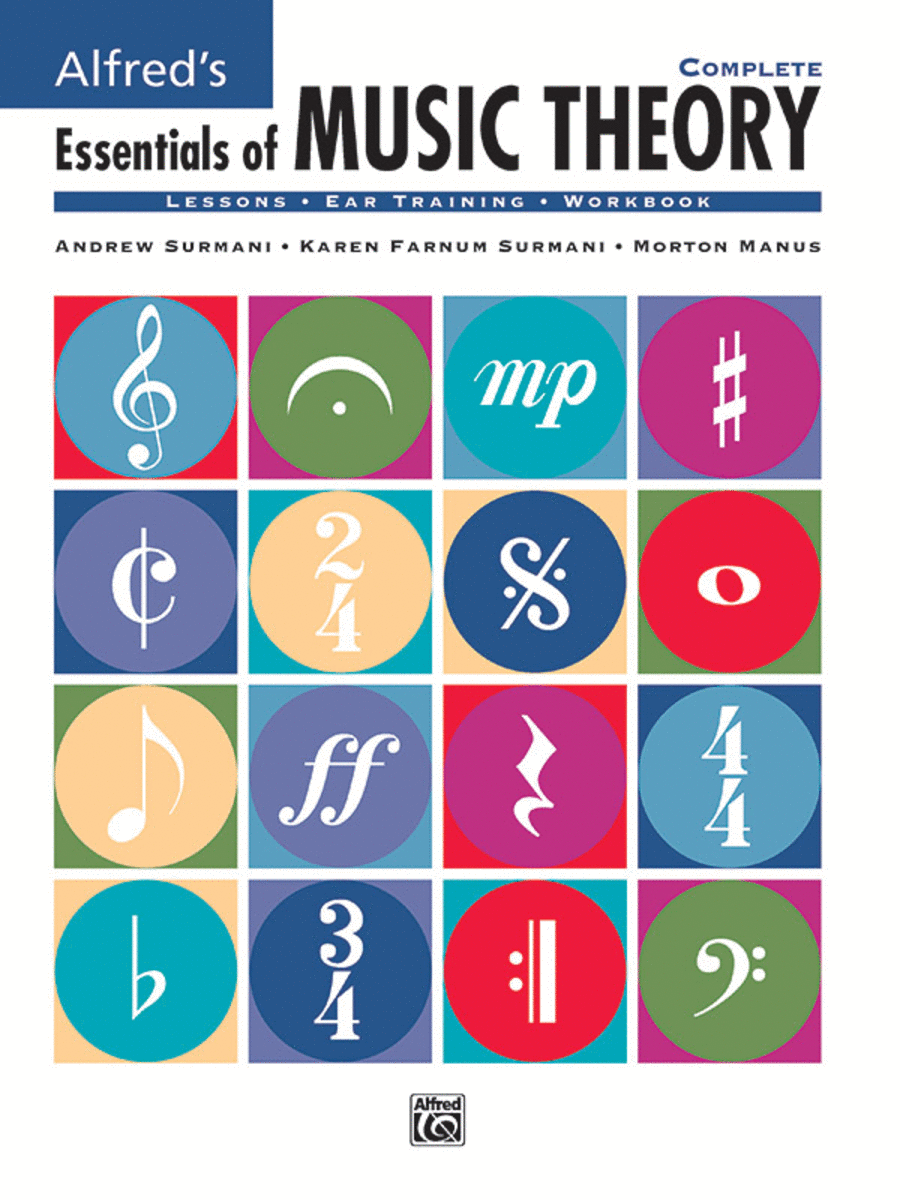
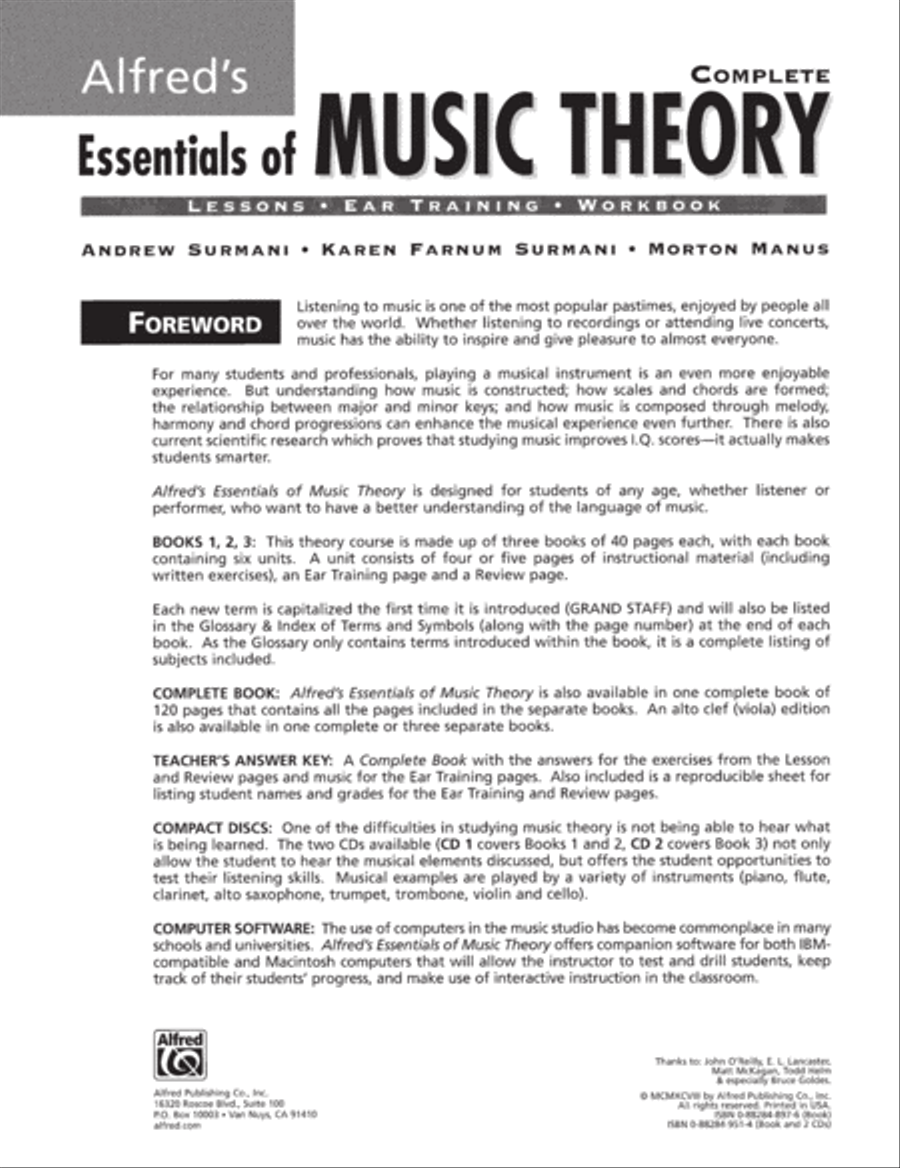
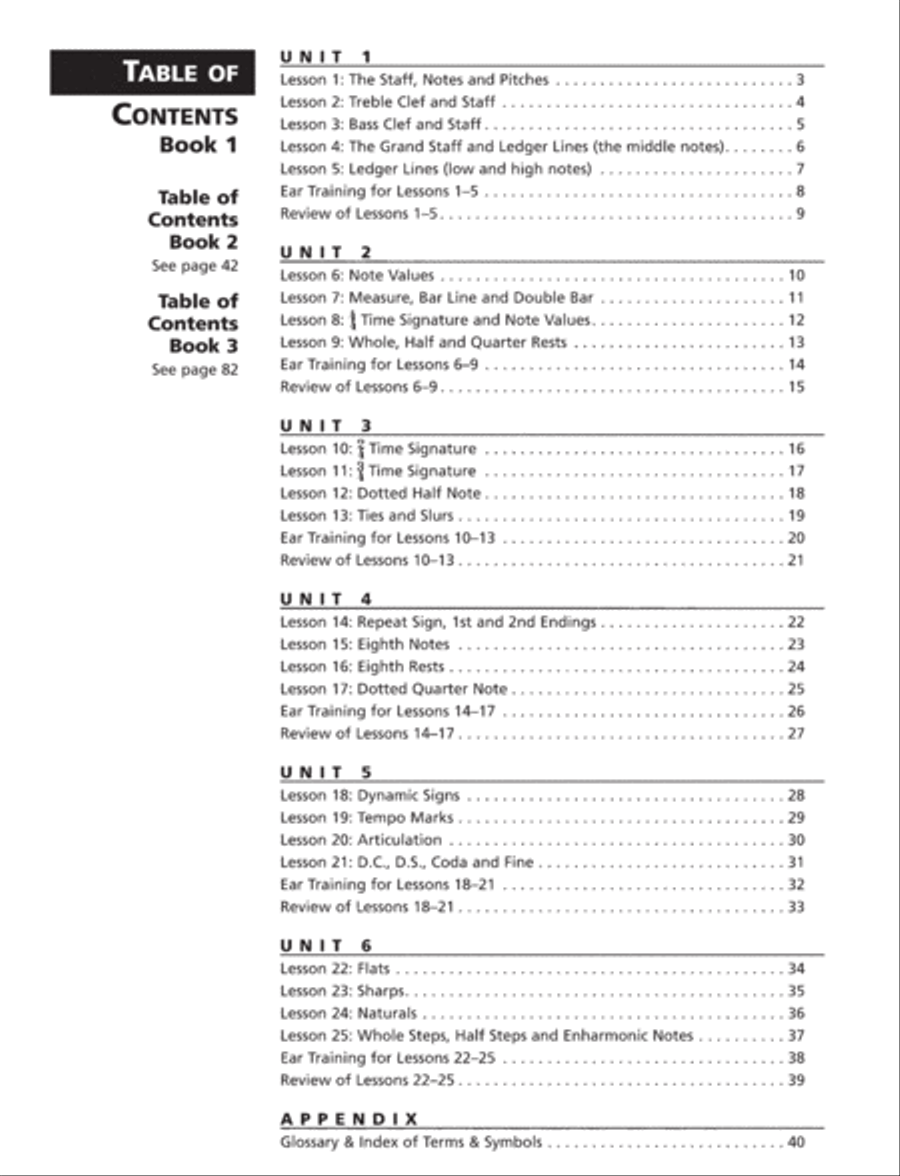
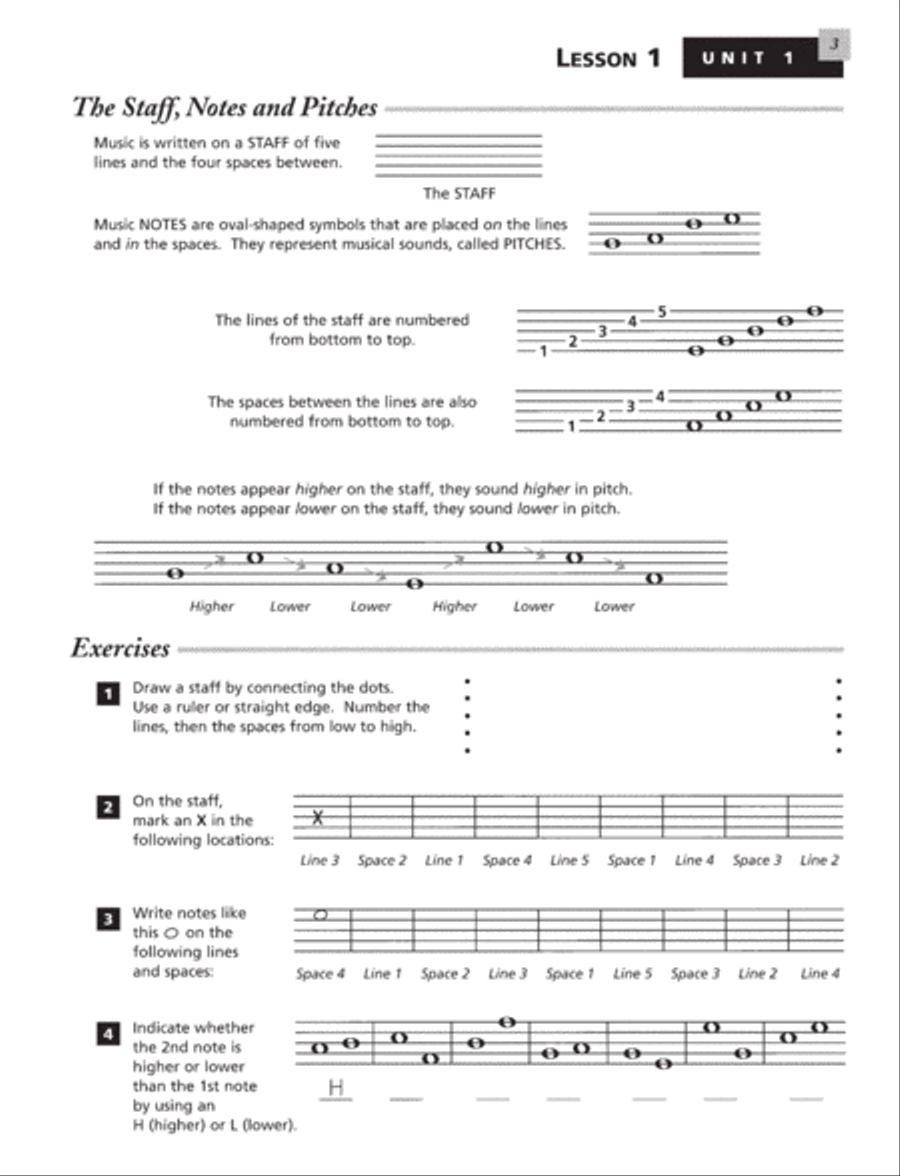
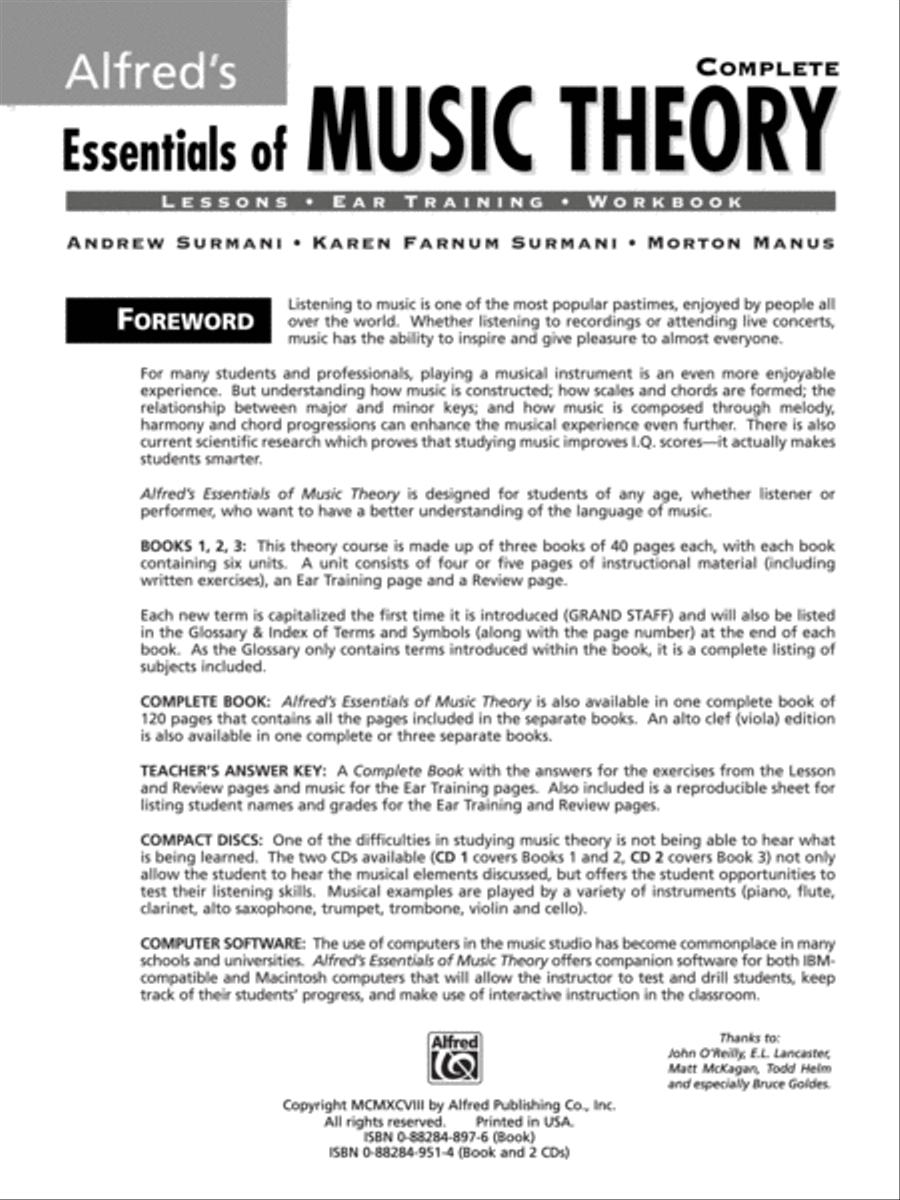
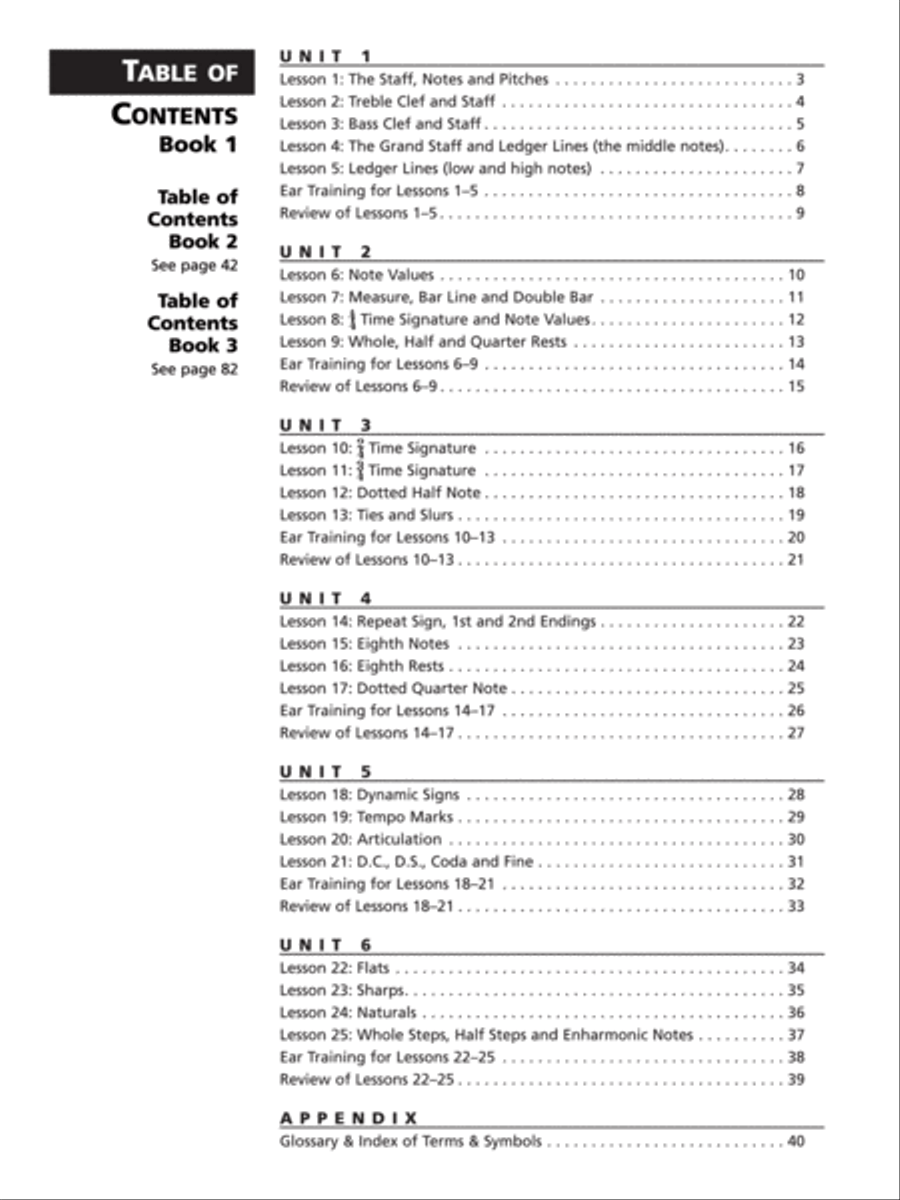
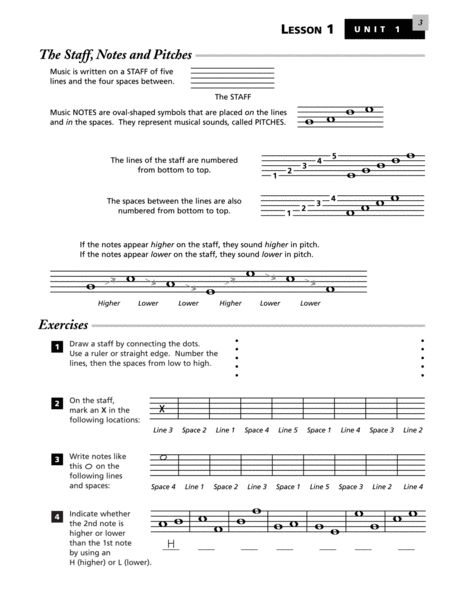
 Share
Share